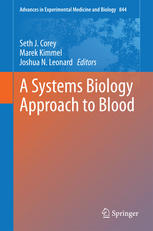

Most ebook files are in PDF format, so you can easily read them using various software such as Foxit Reader or directly on the Google Chrome browser.
Some ebook files are released by publishers in other formats such as .awz, .mobi, .epub, .fb2, etc. You may need to install specific software to read these formats on mobile/PC, such as Calibre.
Please read the tutorial at this link: https://ebookbell.com/faq
We offer FREE conversion to the popular formats you request; however, this may take some time. Therefore, right after payment, please email us, and we will try to provide the service as quickly as possible.
For some exceptional file formats or broken links (if any), please refrain from opening any disputes. Instead, email us first, and we will try to assist within a maximum of 6 hours.
EbookBell Team

4.8
84 reviewsThe blood system is multi-scale, from the organism to the organs to cells to intracellular signaling pathways to macromolecule interactions. Blood consists of circulating cells, cellular fragments (platelets and microparticles), and plasma macromolecules. Blood cells and their fragments result from a highly-ordered process, hematopoiesis. Definitive hematopoiesis occurs in the bone marrow, where pluripotential stem cells give rise to multiple lineages of highly specialized cells. Highly-productive and continuously regenerative, hematopoiesis requires a microenvironment of mesenchymal cells and blood vessels.
A Systems Biology Approach to Blood is divided into three main sections: basic components, physiological processes, and clinical applications. Using blood as a window, one can study health and disease through this unique tool box with reactive biological fluids that mirrors the prevailing hemodynamics of the vessel walls and the various blood cell types. Many blood diseases, rare and common can and have been exploited using systems biology approaches with successful results and therefore ideal models for systems medicine. More importantly, hematopoiesis offers one of the best studied systems with insight into stem cell biology, cellular interaction, development; linage programing and reprograming that are every day influenced by the most mature and understood regulatory networks.